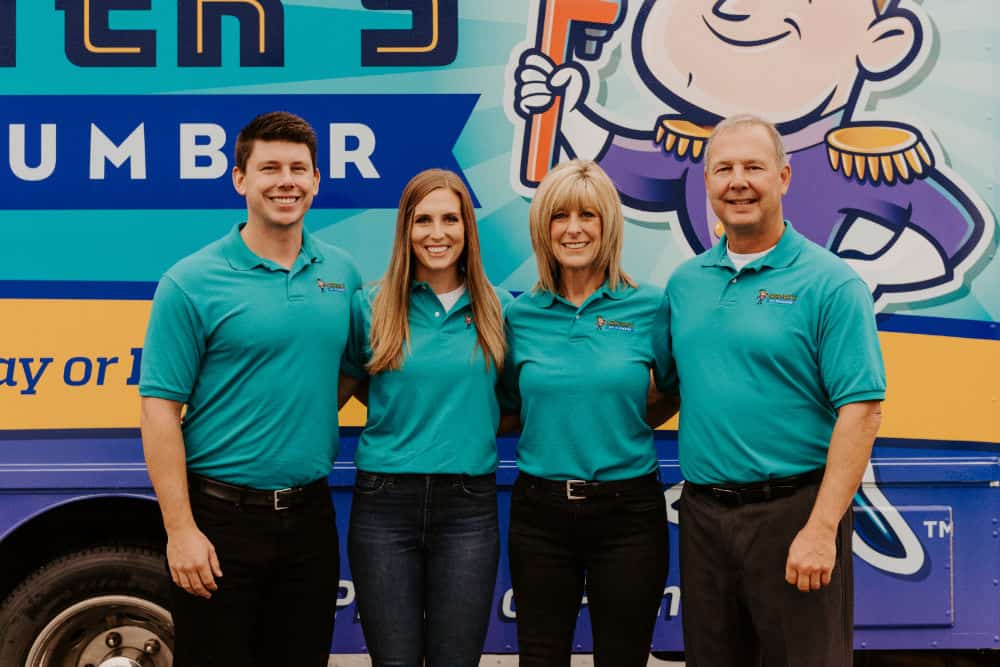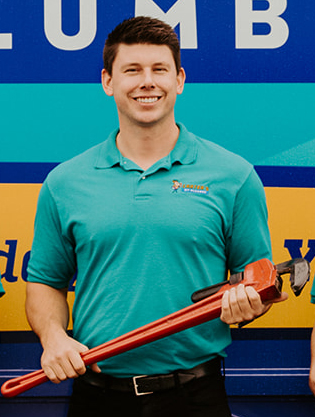Outdoor Plumbing Issues include Sewer Blockage, Pool Plumbing and Sprinkler malfunction
Outdoor plumbing issues may have a mistaken belief that they are not an immediate concern, and can be put off. This is incorrect. Outdoor plumbing issues can be as catastrophic as interior plumbing issues:
· A small roof leak can cause thousands of dollars in damage;
· A sprinkler system issue can cause a water explosion that injures you or your loved ones;
· A sewer blockage can lead to a host of awful indoor plumbing issues.
Recognizing and fixing outdoor plumbing issues is as important as indoor issues.
Sewer Blockage
Your main sewer line connects your waste-water drains to your town’s water system. Your main sewer line carries all the waste you flush down your toilet or put into your sink, and it is connected to your home’s entire water system, so if it backs up, your home’s entire plumbing system is in trouble. Signs of a blockage include water backing up through your drains, sink, tub, or toilet and a gurgling sound emanating from your drains. If either of these only occurs in one fixture, the culprit could be a clogged pipe, but if they occur in multiple fixtures or all your home’s fixtures, you may have a main sewer line blockage. Likely causes of a sewer line blockage are either disposedl of improper items or tree roots growing in your main sewer line. A main sewer line back-up is a serious issue. Drain water backflow can contaminate your house with disease-causing bacteria and cause serious water damage. This issue should be rectified by an experienced, licensed plumber who specilize in drain cleaning services in Indianapolis.
Plumbing Issues in Pool Area
Swimming pools can be a source of many serious issues for homeowners. Swimming pools require a lot of maintenance and repairs, many of which are related to the pool’s plumbing systems. Potential issues include:
· Flow rate;
· Filter debris;
· Leaks.
Increases in filter pressure are likely caused by algae blocking the filter, while decreases in filter pressure are usually caused by blocked suction lines or faulty hardware. Both can be easily rectified yourself. Changes in flow rate indicate other pool issues. If the flow of your pool’s water changes from one common direction to another, it could be a sign that your filter is becoming dirty or clogged. A filter system malfunction can lead to debris bypassing your filter. If this occurs, you may be able to fix the problem yourself by replacing your filter, but the issue may also require a licensed plumber or pool technician.
Leaks can be a very serious problem. Leaks in your pool or pool plumbing system can cause serious damage to your property, waste a lot of water, and waste a lot of expensive pool chemicals. If you detect a leak around your pool area, it should be remedied immediately by an experienced, licensed professional.
Sprinkler Issues
Automatic sprinkler systems are the best way to keep your lawn fresh, green, and thriving all summer. These systems deliver the proper amount of water to your yard in a mechanized, systematic way- no need to manually move your sprinkler or use your own judgment. However, these systems occasionally break down and require maintenance. Luckily, you can handle most sprinkler repairs yourself, without in-depth knowledge of the system. The pipes are plastic, the system is simpler to repair than your home plumbing system, and you don’t need any special skills to repair your automatic sprinkler system.
One common issue that arises in automatic sprinkler systems is that of the sprinkler heads not working. Broken sprinkler heads are easy to identify- look for cracked or broken plastic casing on heads, heads that don’t pop-up, and water that sprays wildly or not at all. You may be able to fix the problem simply by cleaning and resetting your sprinkler heads. Dirt sometimes gets inside sprinkler heads and clogs them. Clogged heads will rise, but won’t spray. First, dig out the head and remove it from the riser. Disassemble the head by unscrewing the top from the canister. Next, remove the filter and rinse it with water. Replace the head on the riser and if it still does not work, replace the head. To replace the sprinkler head:
· Dig around the sprinkler head to expose the riser;
· Unscrew the broken sprinkler head from the riser;
· Install the new head, tightening with your hands.
After you clean or replace your sprinkler heads, reset your system’s spray pattern.
Another common sprinkler system issue is low water pressure. Low water pressure results in sprinkler heads shooting a faint stream of water, or in extreme cases failing to even pop-up. Sometimes, the simplest solution is the best, and turning on your valves at the backflow device may rectify this issue. To ensure that your valves are fully open at the backflow device, first, locate your backflow device. It is located at least twelve inches above the highest sprinkler head in your hard. Once located, turn the valves to their open positions. A valve is open when its handle is parallel to the pipe. If that doesn’t work, you likely have a leak in your water line. Look for a series of sprinkler heads not watering properly. Your problem area will be located between the last working head and the first nonworking head. Look for signs of leaking water, including:
· Water bubbling up from the soil;
· A depression in the ground;
· An unusually very wet area.
Once you’ve found the leak, you must dig into the ground and repair the crack. First, make sure that your system is turned off at the controller, then use a slip coupling to repair the leak:
· Cut a four-inch section of the line at the leak with a hacksaw;
· Place a clamp on one of the lines ends, insert the coupling, then tighten the clamp;
· Place a clamp on the second pipe end, expand the coupling while inserting the nipple into the pipe, then tighten the clamp.



